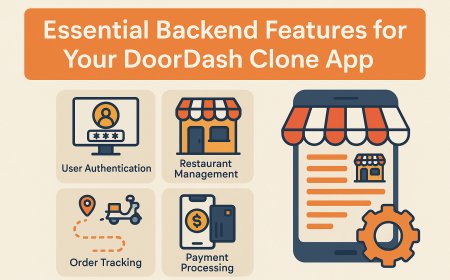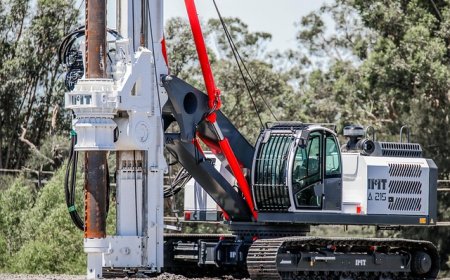How to Update Node Version
How to Update Node Version Node.js has become the backbone of modern web development, powering everything from server-side applications to command-line tools and real-time services. As the ecosystem evolves rapidly, keeping your Node.js version up to date is not just a best practice—it’s a necessity for performance, security, and compatibility. Outdated Node.js versions may expose your application
How to Update Node Version
Node.js has become the backbone of modern web development, powering everything from server-side applications to command-line tools and real-time services. As the ecosystem evolves rapidly, keeping your Node.js version up to date is not just a best practice—it’s a necessity for performance, security, and compatibility. Outdated Node.js versions may expose your applications to known vulnerabilities, lack support for modern JavaScript features, and fail to integrate with newer npm packages. Whether you’re a beginner setting up your first development environment or a seasoned developer managing enterprise-grade applications, knowing how to update Node version efficiently and safely is a critical skill.
This comprehensive guide walks you through every method to update Node.js across different operating systems, explains why version control matters, highlights industry best practices, recommends essential tools, and provides real-world examples to ensure you never get left behind. By the end of this tutorial, you’ll be equipped to manage Node.js versions confidently, avoid common pitfalls, and maintain a secure, high-performance development environment.
Step-by-Step Guide
Method 1: Using Node Version Manager (nvm) – Recommended for Developers
Node Version Manager (nvm) is the most widely adopted tool for managing multiple Node.js versions on a single machine. It allows you to install, switch between, and update Node.js versions without administrative privileges, making it ideal for developers working on multiple projects with different Node.js requirements.
Step 1: Install nvm
First, check if nvm is already installed by running:
command -v nvmIf no output appears, install nvm using the official installation script. Open your terminal and run:
curl -o- https://raw.githubusercontent.com/nvm-sh/nvm/v0.39.7/install.sh | bashOr, if you're using wget:
wget -qO- https://raw.githubusercontent.com/nvm-sh/nvm/v0.39.7/install.sh | bashAfter installation, restart your terminal or run:
source ~/.bashrcor, if you're using zsh:
source ~/.zshrcVerify the installation by typing:
nvm --versionStep 2: List Available Node.js Versions
To see all available Node.js versions, run:
nvm list-remoteThis will display a long list of all released versions. To filter only the Long-Term Support (LTS) versions, use:
nvm list-remote --ltsStep 3: Install the Latest LTS Version
Install the latest LTS version with:
nvm install --ltsAlternatively, install a specific version:
nvm install 20.12.1Step 4: Set the Default Version
After installation, set the newly installed version as your default:
nvm use --ltsThen make it permanent:
nvm alias default lts/*Step 5: Verify the Update
Confirm your Node.js version has been updated:
node --versionYou should now see the latest LTS version (e.g., v20.12.1 or higher). Repeat this process whenever a new LTS version is released.
Method 2: Using nvm-windows (Windows Users)
Windows users can use nvm-windows, a port of nvm designed specifically for Windows environments.
Step 1: Download and Install nvm-windows
Visit the official GitHub repository: https://github.com/coreybutler/nvm-windows
Download the latest nvm-setup.exe file and run it as an administrator.
Step 2: Open Command Prompt or PowerShell
After installation, open a new Command Prompt or PowerShell window and verify installation:
nvm versionStep 3: List Available Versions
Run:
nvm list availableStep 4: Install the Latest LTS Version
Install the latest LTS version:
nvm install latestOr install a specific LTS version:
nvm install 20.12.1Step 5: Use and Set Default
Switch to the new version:
nvm use 20.12.1Set it as default:
nvm alias default 20.12.1Step 6: Confirm Update
Run:
node --versionEnsure the output matches the installed version.
Method 3: Downloading from Node.js Official Website
If you prefer a manual approach or are in an environment where nvm is not supported, you can download Node.js directly from the official site.
Step 1: Visit Node.js Official Website
Go to https://nodejs.org.
Step 2: Download the LTS Version
Click the “LTS” button to download the recommended version for most users. Avoid the “Current” version unless you need cutting-edge features and are comfortable with potential instability.
Step 3: Run the Installer
On Windows: Double-click the downloaded .msi file and follow the installation wizard.
On macOS: Open the .pkg file and proceed through the prompts.
On Linux: Use the binary distribution (e.g., node-v20.12.1-linux-x64.tar.xz). Extract it and move the files to /usr/local:
cd /tmp
tar -xf node-v20.12.1-linux-x64.tar.xz
sudo cp -r node-v20.12.1-linux-x64/* /usr/local/
Step 4: Verify Installation
Open a new terminal and run:
node --version
npm --version
Ensure both commands return the expected version numbers.
Method 4: Using Package Managers (Homebrew, Chocolatey, Apt)
Package managers are convenient for users who prefer managing software through their system’s native tools.
macOS with Homebrew
First, update Homebrew:
brew updateThen upgrade Node.js:
brew upgrade nodeIf Node.js isn’t installed yet:
brew install nodeVerify:
node --versionWindows with Chocolatey
Open PowerShell as administrator and run:
choco upgrade nodejsTo install for the first time:
choco install nodejsLinux with APT (Ubuntu/Debian)
First, remove any existing Node.js installation:
sudo apt remove nodejs npmAdd the NodeSource repository for the latest LTS version:
curl -fsSL https://deb.nodesource.com/setup_20.x | sudo -E bash -Install Node.js:
sudo apt install -y nodejsVerify:
node --versionMethod 5: Updating Node.js in Docker Containers
If your application runs in Docker, updating Node.js requires modifying your Dockerfile.
Step 1: Locate Your Dockerfile
Open your project’s Dockerfile.
Step 2: Change the Base Image
Find the line that starts with FROM node: and update the tag to the latest LTS version:
FROM node:20-alpineOr for a specific patch version:
FROM node:20.12.1-alpineStep 3: Rebuild and Test
Rebuild your Docker image:
docker build -t my-app .Run a container to test:
docker run --rm my-app node --versionStep 4: Push Updated Image
If using a container registry like Docker Hub or GitHub Packages, tag and push the new image:
docker tag my-app your-username/my-app:20.12.1
docker push your-username/my-app:20.12.1
Always test your application thoroughly after updating the Node.js version in Docker to ensure compatibility with your dependencies.
Best Practices
Updating Node.js isn’t just about running a command—it’s about ensuring stability, security, and compatibility across your development and production environments. Follow these best practices to avoid disruptions and maintain a healthy ecosystem.
Always Use LTS Versions in Production
Node.js releases two types of versions: “Current” and “LTS” (Long-Term Support). LTS versions receive critical bug fixes, security updates, and performance improvements for 30 months. Current versions are experimental and only supported for 8 months. Never deploy a Current version to production. Always use the latest LTS version unless you have a specific, documented reason not to.
Test Before Updating
Before updating Node.js on your main development machine or production server, test the new version in a staging environment. Run your full test suite, including unit, integration, and end-to-end tests. Pay special attention to native modules (e.g., those compiled with node-gyp) as they may break with newer Node.js versions due to ABI changes.
Pin Dependencies in package.json
Use exact version numbers or caret ranges (^) wisely. Avoid using * or unbounded ranges. Consider using package-lock.json or npm-shrinkwrap.json to lock dependency versions. This ensures your application behaves consistently across environments, even after Node.js updates.
Use .nvmrc for Project-Specific Versions
Create a file named .nvmrc in the root of each project and specify the required Node.js version:
20.12.1Then, in any directory containing the file, run:
nvm usenvm will automatically detect and switch to the version specified in .nvmrc. This is especially useful for team collaboration and CI/CD pipelines.
Monitor for Security Vulnerabilities
Regularly scan your project for vulnerabilities using tools like npm audit or npm audit fix. Even if your Node.js version is current, outdated dependencies can introduce risks. Integrate security scanning into your CI pipeline to catch issues early.
Document Version Requirements
Include your required Node.js version in your project’s README.md and documentation. Example:
Prerequisites
- Node.js v20.12.1 or higher (LTS)
- npm v9.6.7 or higher
This helps new contributors set up their environment correctly and reduces “works on my machine” issues.
Plan for Deprecations
Node.js occasionally deprecates APIs or removes experimental features. Before upgrading, review the official Node.js release notes for breaking changes. For example, Node.js v14 removed the legacy HTTP parser, and Node.js v16 deprecated the Buffer() constructor without arguments. Use tools like node --trace-deprecation to identify deprecated usage in your code.
Automate Version Updates in CI/CD
Integrate Node.js version checks into your CI pipeline. For example, in GitHub Actions:
- name: Check Node.js version
run: |
node --version
npm --version
shell: bash
Use tools like Dependabot or Renovate to automatically create pull requests when new Node.js LTS versions are released. This keeps your projects up to date with minimal manual intervention.
Tools and Resources
Managing Node.js versions becomes significantly easier with the right tools and resources. Below is a curated list of essential utilities and references to help you stay current and informed.
Node Version Manager (nvm)
The gold standard for managing Node.js versions on macOS and Linux. Lightweight, reliable, and scriptable. Supports installing, switching, and aliasing versions with ease.
nvm-windows
https://github.com/coreybutler/nvm-windows
The most stable and widely used nvm alternative for Windows. Offers a GUI installer and command-line interface for seamless version management.
Node.js Official Website
The authoritative source for downloads, release schedules, and documentation. Always refer here for official LTS and Current version information.
Node.js Release Schedule
https://nodejs.org/en/about/releases/
A detailed calendar showing when each version enters maintenance, becomes active LTS, and reaches end-of-life. Crucial for planning upgrades.
npm audit
Run npm audit in your project directory to identify security vulnerabilities in your dependencies. Use npm audit fix to automatically apply non-breaking fixes. Integrate it into your CI workflow.
Dependabot
GitHub’s automated dependency updater. Configures itself to create pull requests for Node.js version bumps and dependency updates. Reduces manual maintenance.
Renovate
https://github.com/renovatebot/renovate
An open-source dependency update tool that supports GitHub, GitLab, Bitbucket, and more. Highly configurable for enterprise environments.
Node.js API Documentation
Complete, searchable documentation for all Node.js core modules. Essential for understanding breaking changes and new features.
Node.js Discord and GitHub Discussions
Join the official Node.js Discord server or GitHub Discussions to stay informed about upcoming changes, community feedback, and real-time support from maintainers.
Node.js Version Compatibility Matrix
Use tools like Node.js Version Management Guide or https://node.green/ to check which JavaScript features are supported in your target Node.js version.
Visual Studio Code Node.js Extension Pack
Install the official Node.js extension pack in VS Code for enhanced debugging, IntelliSense, and version detection. It includes extensions like “Node.js Snippets,” “ESLint,” and “Debugger for Node.js.”
Real Examples
Understanding how to update Node.js becomes clearer when you see it applied in real-world scenarios. Below are three practical examples demonstrating how teams successfully manage Node.js upgrades.
Example 1: Startup Scaling from Node.js v14 to v20
A SaaS startup was running on Node.js v14, which reached end-of-life in April 2023. Their application used Express.js, MongoDB, and several native modules. The team followed this process:
- Created a staging environment mirroring production.
- Updated Node.js to v20.12.1 using nvm.
- Re-ran their full test suite (Jest, Cypress).
- Discovered one dependency (
bcrypt@4.0.1) was incompatible. Upgraded tobcrypt@5.1.1. - Used
npm audit fix --forceto resolve 12 high-severity vulnerabilities. - Deployed to staging for 72 hours of monitoring.
- Deployed to production during low-traffic hours with rollback plan.
Result: 40% faster API response times, reduced memory usage, and improved security posture.
Example 2: Enterprise CI/CD Pipeline with Automated Updates
An enterprise with 50+ microservices used Renovate to automate Node.js version updates. Their configuration:
{
"extends": [
"config:base",
":preserveSemverRanges"
],
"node": {
"enabled": true,
"automerge": true,
"automergeType": "pr",
"major": {
"enabled": true,
"automerge": true
}
}
}
Renovate created pull requests for every new LTS release. Each PR triggered automated tests across all services. If tests passed, the PR was merged automatically. If not, developers received a notification with logs and failure details.
Result: Zero manual version updates for 18 months. All services remained on supported Node.js versions with zero security incidents.
Example 3: Docker-Based Deployment with Multi-Stage Builds
A team developing a Node.js + React application used Docker with multi-stage builds. Their Dockerfile:
Build stage
FROM node:20-alpine AS builder
WORKDIR /app
COPY package*.json ./
RUN npm ci --only=production
COPY . .
RUN npm run build
Production stage
FROM node:20-alpine
WORKDIR /app
COPY --from=builder /app/dist ./dist
COPY --from=builder /app/package*.json ./
RUN npm ci --only=production
EXPOSE 3000
CMD ["node", "dist/index.js"]
When Node.js v21 was released, they updated the base image tag to node:21-alpine, rebuilt, and tested. After confirming stability, they updated their CI pipeline to use node:21-alpine as the default. They also added a version check in their GitHub Actions workflow:
- name: Validate Node Version
run: |
if [ "$(node --version)" != "v21.x.x" ]; then
echo "Node.js version mismatch!"
exit 1
fi
Result: Consistent deployments across all environments. No version drift between development, staging, and production.
FAQs
What happens if I don’t update Node.js?
Not updating Node.js exposes your application to security vulnerabilities, limits access to performance improvements, and may cause compatibility issues with newer npm packages. Eventually, unsupported versions will no longer receive security patches, making your system vulnerable to exploits.
Can I downgrade Node.js if something breaks?
Yes. If you’re using nvm, simply run nvm install 18.18.2 followed by nvm use 18.18.2. You can also switch back to any previously installed version using nvm use <version>. Always keep your previous version installed until you confirm the new one works.
How often should I update Node.js?
Update to new LTS versions every 6–12 months, aligning with Node.js’s release cycle. Avoid updating to Current versions unless you’re testing features. Always prioritize LTS for production environments.
Will updating Node.js break my existing projects?
Possibly. Breaking changes can occur between major versions (e.g., v16 to v18, v18 to v20). Always test thoroughly. Use nvm to isolate versions per project, and maintain a .nvmrc file to ensure consistency.
How do I know which version I’m currently using?
Run node --version in your terminal. To see all installed versions with nvm, run nvm ls.
Can I use multiple Node.js versions on the same machine?
Yes. Tools like nvm and nvm-windows allow you to install and switch between dozens of Node.js versions on the same machine. Each project can use its own version without conflicts.
Does npm need to be updated separately?
npm is bundled with Node.js. When you update Node.js, npm is updated automatically. However, you can manually update npm using npm install -g npm@latest if needed.
Is it safe to update Node.js on a production server?
Only if you’ve tested the new version in a staging environment that mirrors production. Always schedule updates during maintenance windows, and have a rollback plan ready. Use containerization (Docker) to make rollbacks easier.
What’s the difference between LTS and Current?
LTS (Long-Term Support) versions are stable, receive security patches for 30 months, and are recommended for production. Current versions include new features but are unstable and only supported for 8 months. Never use Current in production.
How do I update Node.js on a shared hosting server?
Shared hosting often restricts Node.js version control. Contact your provider to request an upgrade. If not possible, consider migrating to a VPS (e.g., DigitalOcean, AWS EC2) or a platform like Render, Vercel, or Railway that supports custom Node.js versions.
Conclusion
Updating Node.js is not a one-time task—it’s an ongoing responsibility for every developer and organization building modern applications. From ensuring security and performance to enabling compatibility with the latest JavaScript features and npm packages, staying current is essential. The methods outlined in this guide—whether using nvm, package managers, Docker, or direct downloads—provide flexible, reliable ways to manage your Node.js versions across any environment.
Adopting best practices like using LTS versions, testing in staging, pinning dependencies, and automating updates through CI/CD pipelines transforms version management from a chore into a streamlined, secure process. Real-world examples demonstrate that teams who prioritize Node.js updates experience fewer outages, faster deployments, and stronger security postures.
Remember: The goal isn’t to chase the latest version for the sake of novelty. It’s to maintain a stable, secure, and high-performing environment that supports your application’s needs. Use the tools and strategies in this guide to make informed, confident decisions about your Node.js versioning strategy. Stay updated, stay secure, and keep building.





































